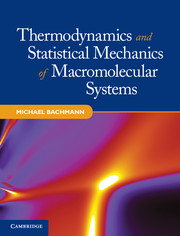Book contents
- Frontmatter
- Dedication
- Contents
- Preface and outline
- 1 Introduction
- 2 Statistical mechanics: A modern review
- 3 The complexity of minimalistic lattice models for protein folding
- 4 Monte Carlo and chain growth methods for molecular simulations
- 5 First insights to freezing and collapse of flexible polymers
- 6 Crystallization of elastic polymers
- 7 Structural phases of semiflexible polymers
- 8 Generic tertiary folding properties of proteins on mesoscopic scales
- 9 Protein folding channels and kinetics of two-state folding
- 10 Inducing generic secondary structures by constraints
- 11 Statistical analyses of aggregation processes
- 12 Hierarchical nature of phase transitions
- 13 Adsorption of polymers at solid substrates
- 14 Hybrid protein–substrate interfaces
- 15 Concluding remarks and outlook
- References
- Index
14 - Hybrid protein–substrate interfaces
Published online by Cambridge University Press: 05 May 2014
- Frontmatter
- Dedication
- Contents
- Preface and outline
- 1 Introduction
- 2 Statistical mechanics: A modern review
- 3 The complexity of minimalistic lattice models for protein folding
- 4 Monte Carlo and chain growth methods for molecular simulations
- 5 First insights to freezing and collapse of flexible polymers
- 6 Crystallization of elastic polymers
- 7 Structural phases of semiflexible polymers
- 8 Generic tertiary folding properties of proteins on mesoscopic scales
- 9 Protein folding channels and kinetics of two-state folding
- 10 Inducing generic secondary structures by constraints
- 11 Statistical analyses of aggregation processes
- 12 Hierarchical nature of phase transitions
- 13 Adsorption of polymers at solid substrates
- 14 Hybrid protein–substrate interfaces
- 15 Concluding remarks and outlook
- References
- Index
Summary
Steps toward bionanotechnology
The advancing progress in manipulating soft and solid materials at the nanometer scale opens up new vistas for potential bionanotechnological applications of hybrid organicinorganic interfaces [278, 326]. This includes, e.g., nanosensors being sensitive to specific biomolecules (“nanoarrays”), as well as organic electronic devices on polymer basis which have, for example, already been realized in organic light-emitting diodes [327]. An important development in this direction is the identification of proteins that can bind to specific compounds. Over the last decade, genetic engineering techniques have been successfully employed to find peptides with affinity for, e.g., metals [273, 328], semiconductors [274–276], and carbon nanotubes [329]. However, the mechanisms by which peptides bind to these materials are not completely understood; it is, for example, unclear what role conformational changes play in the binding process.
In these mainly experimental studies, it has also been shown that the binding of peptides on metal and semiconductor surfaces depends on the types of amino acids [330] and on the sequences of the residues in the peptide chain [273–276]. These experiments reveal many different interesting and important problems, which are related to general aspects of the question why and how proteins fold. For example, this pertains to the character of the adsorption process, i.e., whether the peptides simply dock to the substrate without noticeable structural changes or whether they perform conformational transitions while binding. Another point is how secondary structures of peptide folds in the bulk influence the binding behavior to substrates. In helical structures, for example, side chains are radially directed and – due to the helical symmetry – residues with a certain distance in the sequence arrange linearly.
- Type
- Chapter
- Information
- Publisher: Cambridge University PressPrint publication year: 2014



